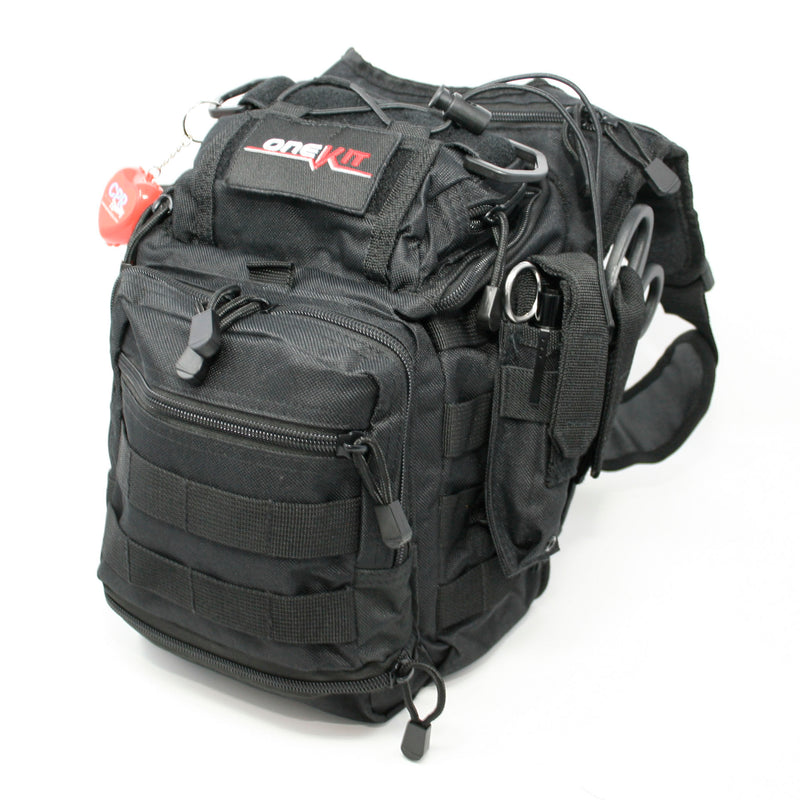Introduction: The Importance of a Complete First Aid Kit
In today's fast-paced world, accidents and emergencies can happen at any time. Whether you're at home, in the office, or on the go, having a well-stocked and comprehensive first aid kit is essential for ensuring the safety and well-being of yourself and others. In this step-by-step guide, we will walk you through the process of building the perfect complete first aid kit. From the best first aid Best Emergency First Aid Kit kit in Texas to the essential kit for first aid, we will cover everything you need to know to be prepared for any emergency.
Building the Perfect Complete First Aid Kit: A Step-by-Step Guide
Step 1: Assessing Your Needs
Before diving into assembling your first aid kit, it's crucial to assess your specific needs. Consider factors such as your location, lifestyle, and any existing medical conditions that may require specialized supplies. By understanding your unique circumstances, you can ensure that your first aid kit is tailored to meet your specific requirements.
Sub-heading: Best First Aid Kit in Texas
If you're residing in Texas, it's important to have a first aid kit that is suitable for the region's unique environmental conditions. Texas is known for its extreme weather patterns, including scorching heatwaves and severe storms. Therefore, it's crucial to select a first aid kit that includes items such as sunburn relief ointment, insect repellent, and waterproof bandages to protect against water damage.
Step 2: Gathering Essential Supplies
Once you have assessed your needs, it's time to gather the essential supplies for your complete first aid kit. These supplies should cover a wide range of potential injuries and emergencies.
Sub-heading: Complete First Aid Kit
A complete first aid kit should include all the necessary items to handle minor injuries, as well as more serious medical emergencies. Here are some essential items to include in your kit:
Adhesive bandages of various sizes Sterile gauze pads and adhesive tape Antiseptic wipes or solution Tweezers and scissors Disposable gloves Instant cold packs Pain relievers (such as acetaminophen or ibuprofen) Antihistamines for allergic reactions CPR mask or face shield Emergency blanketStep 3: Organizing Your Kit
Once you have gathered all the necessary supplies, it's important to organize your first aid kit in a logical and efficient manner. This will ensure that you can quickly locate the required items during an emergency.
Sub-heading: First Aid Kit Essentials
To make your first aid kit easy to navigate, consider organizing it into sections based on the type of injury or emergency. For example:
Wound care section: Include bandages, gauze pads, adhesive tape, and antiseptic wipes. Medications section: Keep pain relievers, antihistamines, and any prescribed medications in a separate compartment. Tools section: Store tweezers, scissors, and disposable gloves together for easy access. Emergency equipment section: Keep items such as a CPR mask and emergency blanket in their designated area.Frequently Asked Questions (FAQs)
Q: Can I purchase a pre-made first aid kit instead of assembling one myself? A: Absolutely! There are many pre-made first aid kits available on the market that offer a comprehensive range of supplies. However, building your own kit allows you to customize it according to your specific needs.
Q: How often should I check and restock my first aid kit? A: It is recommended to check your first aid kit regularly, at least every six months, to ensure that all supplies are in good condition and have not expired. Restock any used or expired items promptly.
:max_bytes(150000):strip_icc()/HLT-HOMESTOCK-PLUS-PROFESSIONAL-FIRST-AID-KIT-TRAUMA-KIT-WITH-LABELLED-COMPARTEMENTS-MOLLE-SYSTEM-JHETT-1388-b8647cf596f04e4690d3d010a6784ef9.jpg)

Q: Can I include prescription medications in my first aid kit? A: It is generally not recommended to include prescription medications in a first aid kit, as they may require specific storage conditions or dosage instructions. It's best to keep prescription medications separate and easily accessible.
Q: Are there any additional items I should consider adding to my first aid kit? A: Depending on your needs, you may consider adding items such as an instant glucose supply for diabetic emergencies, a snakebite kit for outdoor enthusiasts, or an EpiPen for severe allergic reactions. Consult with a healthcare professional for personalized recommendations.
Q: Should I include a first aid manual in my kit? A: Yes, including a first aid manual is highly recommended. It provides valuable guidance on how to administer basic first aid and can be a useful resource during emergencies.
Q: Where should I store my first aid kit? A: Store your first aid kit in a cool, dry place away from direct sunlight and potential hazards. Ensure that it is easily accessible to everyone in your household or workplace.
Conclusion
Building the perfect complete first aid kit is an essential step towards ensuring the safety and well-being of yourself and others. By following this step-by-step guide and considering factors such as location, lifestyle, and specific needs, you can create a comprehensive kit that equips you for any emergency. Remember to regularly check and restock your kit to maintain its effectiveness. Stay prepared, stay safe!